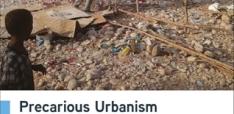Cuts to USAID – the Fallout Continues (Part 1)

In a short series, Simon Fraser argues that the dismantling USAID continues to have catastrophic impact on the international donor assistance sector. This post looks at the demise of the role of the U.S. in global development leadership. Two subsequent pieces will highlight (1) the wider disruption to global development assistance and the multilateral architecture that has historically underpinned it and (2) the loss of employment, domestically within USAID and internationally among implementing partners, NGOs and contractors.
The election of President Trump and the resurgence of his ‘Make America Great Again’ (MAGA) agenda has ushered in a new era of myopic transactionality in U.S. foreign policy, with profound and troubling consequences for the international development assistance sector. The current administration views foreign aid through a lens of transactional self-interest: unless it yields immediate returns, it isn’t worth the investment.
The U.S. withdrawal from multilateral development leadership and its insistence on quid pro quo diplomacy leaves a void increasingly being filled by China. However, China’s development assistance is also widely viewed as a tool for expanding geopolitical influence, often through controversial “debt trap diplomacy”.
The Trump administration’s dismantling of the United States Agency for International Development (USAID) is the most visible manifestation of this strategic shift. In early 2025, following a federal court ruling upholding aggressive cost-cutting measures, USAID was effectively shut down.
The scope of these cuts is unprecedented. The administration eliminated 5,800 of 6,200 multiyear USAID contracts, amounting to US$54 billion, and slashed nearly 30% of State Department foreign aid grants, equating to a further US$4.4 billion (AP News, 2025). According to official statements, over 90% of USAID’s global aid contracts have been cancelled, representing approximately US$60 billion in total reductions to U.S. development and humanitarian support (AP News, 2025).
The ramifications are immediate and profound halting or disrupting critical health, education, governance, and infrastructure programs in many of the world’s most vulnerable regions.
As noted in a previous article, according to the OECD, the United States of America, largely through USAID, provided 28% (US$64 billion) of the US$223 billion in official development assistance provided by governments throughout the world. This article, the first of three, will focus on the decline of global development leadership.
USAID and Global Development Leadership
USAID’s significance cannot be measured solely by dollars disbursed. It has long served as a compass for the global development community, setting standards, convening actors, piloting innovation, and defending the rights and voices of the most marginalised.
USAID has historically played a leadership role in shaping global aid policy, particularly around promoting democracy, Preventing Sexual Exploitation and Harassment (PSEAH) standards, gender mainstreaming, and results-based financing. Its downsizing is perceived as a retreat from global leadership and values-based diplomacy. This undermines US soft power and cedes space to other actors, which may place less emphasis on participatory governance or human rights.
The future of partnership between donor agencies may be called into question. The World Food Programme reports difficulty assembling the same scale of pooled resources for emergencies, due to the loss of USAID’s convening and logistical clout.
Beyond policy leadership, USAID has been a powerful technical innovation incubator. Its Development Innovation Ventures (DIV) were instrumental in supporting groundbreaking, evidence-based solutions that address pressing global development challenges. By supporting initiatives with high potential for impact and scalability, DIV enabled projects that combine innovation with practical application.
In Rwanda, USAID's support facilitated the deployment of autonomous drones by Zipline, a California-based startup, to deliver blood and medical supplies to remote health facilities.This initiative significantly reduced delivery times and wastage of blood products. A study published in The Lancet Global Health reported that over 12,700 blood product orders were delivered by drones to 20 hospitals between 2017 and 2019, with a median delivery time of 41 minutes. That led to a 67% reduction in blood product expirations, showcasing the efficacy of drone logistics in improving rural healthcare delivery.
In Bangladesh, USAID's Mobile Solutions Technical Assistance and Research (mSTAR) program partnered with the Shakti Foundation and Airtel Bangladesh to disburse micro-credit and salary payments via mobile money. This enabled the Shakti Foundation to distribute approximately 5 million Bangladeshi Taka (about USD $63,500) per month to 1,000 staff and farmers, enhancing financial inclusion for women in rural areas.
These initiatives combined nimbleness with scale, a rare pairing in global development.
The agency’s retreat, then, represents not just a shrinking of U.S. presence but a diffusion of purpose. In its absence, no other donor has yet stepped in to play the role of ‘first mover’, the one willing to take a chance on fragile contexts, nascent technologies or underfunded sectors. The result is a chilling but likely temporary destructive effect. Initially, donors will be more cautious, less innovative, more risk averse and fewer services will be provided where they are most needed. But that seismic shift in responsibility and first mover responder is open to interested and emerging parties but will the present void be filled quickly?
The massive cuts in USAID are not merely a budgetary realignment but an abdication of soft power, development diplomacy, and values-based global stewardship - replaced with myopic transactionalism.
USAID's partnerships often encouraged co-financing from other donors, amplifying the impact of development initiatives. Cuts to USAID will have a ripple effect on other donors. The sudden vacuum caused by the virtual end of USAID may cause other donors to reassess risk and pull back from complex or fragile contexts in the absence of USAID co-finance and support. It is expected that donor hesitancy will create cascading funding shortfalls, particularly in sectors with low visibility for example, across gender equality, disability and social inclusion, resettlement programs and strong environmental safeguards.
However, not all the blame can be laid at the feet of Trump and his MAGA and DOGE initiative. As European nations are also facing similar budgetary and financial constraints, the Netherlands, Belgium, and France have all recently announced or implemented significant reductions in their development aid budgets
The Dutch government announced a structural cut of €2.4 billion to its annual development aid budget starting in 2027. This reduction will decrease the aid budget from €6.1 billion to €3.8 billion, lowering the Official Development Assistance from 0.62% of Gross National Income (GNI) in 2024 to 0.44% by 2029.
Belgium plans to reduce its development cooperation funding by 25% over the next legislative period, as confirmed by Foreign Minister Maxime Prévot.
France is set to cut its public development aid by up to 40% as part of a €32 billion budget reduction for 2025. This incudes a 37% reduction in ODA budget appropriations, amounting to a decrease of over €2 billion.
Given all that, European countries will struggle to fill the void left by USAID's withdrawal, potentially leaving millions without essential aid.
Conclusion
The collapse of USAID’s global programming has derailed vital health and education systems, and shattered decades-long partnerships. More profoundly, it has stripped away the moral and strategic scaffolding of U.S. global leadership, leaving allies uncertain and adversaries emboldened.
The global development system was never meant to hinge on a single actor, but in practice USAID often was. Its withdrawal lays bare the fragility of a world order built on good faith and shared responsibility. Now, donors must confront uncomfortable questions: Who will set the standards? Who will defend rights-based development? Who will take the risks?
If the international community is to recover from this rupture, it must urgently reimagine a more diversified, resilient aid architecture, one less vulnerable to political tides, and more rooted in solidarity, local leadership, and long-term commitment. Because this is not just the end of an agency, it is a test of whether development, as a global initiative, can endure without it. In this new, uncertain landscape, the global community must urgently recommit to inclusive, sustainable development, anchored in solidarity, not short-term transactional self-interest. In the words of Mahbub ul Haq, "The real wealth of a nation is its people. And the purpose of development is to create an enabling environment for people to enjoy long, healthy and creative lives." Human Development Report, 1990.
Simon Fraser teaches Development Studies at the University of Adelaide and is completing a doctoral thesis on donor funding of education programs in the Pacific. He has over 30 years’ experience in the development sector, having lived and worked in long term positions in India, Malaysia, Laos, Vietnam, Kiribati, Vanuatu, Mongolia and The Philippines. He has held Team Leader and economist/education specialist consulting positions on programs funded by the World Bank (Guyana), United Nations Office on Drugs and Crime (Laos PDR) Asian Development Bank (Nepal, Mongolia, Tajikistan, Sri Lanka, The Philippines, Kiribati and Indonesia) and Australia’s Department of Foreign Affairs and Trade (Kiribati, Vanuatu, Mongolia).
The author acknowledges and thanks Emeritus Professor Brian Stoddart and Amber Hall for comments on earlier drafts.


